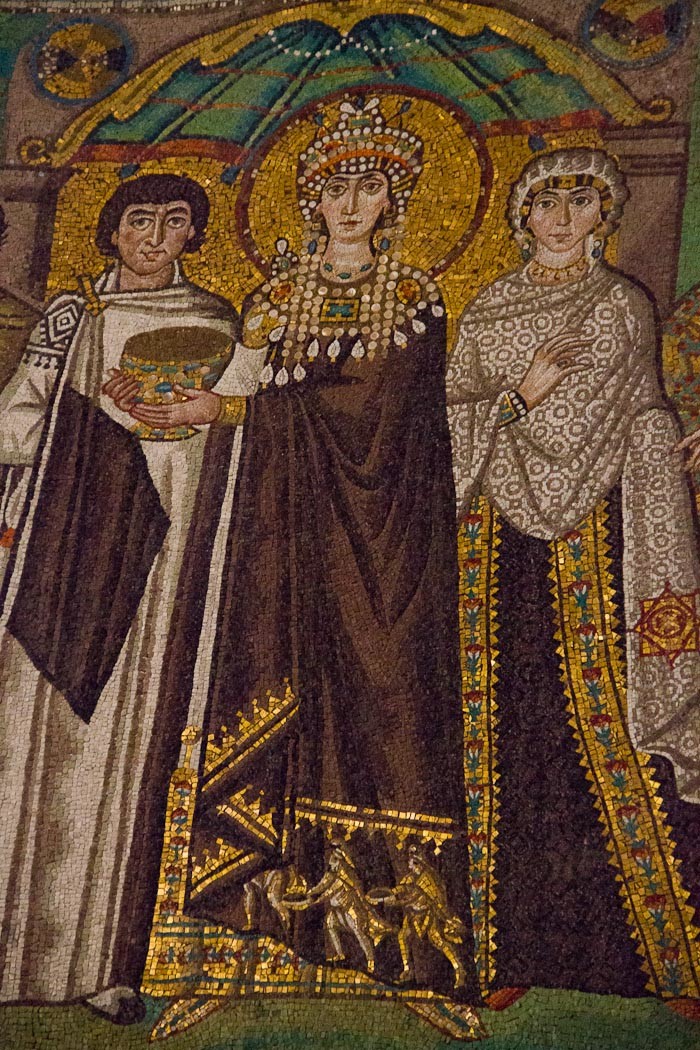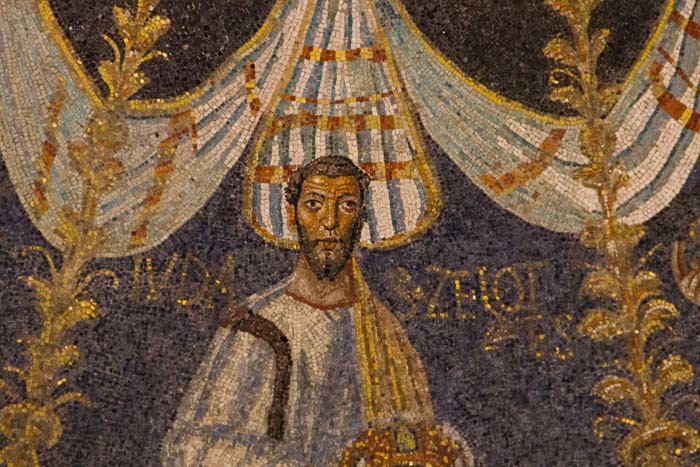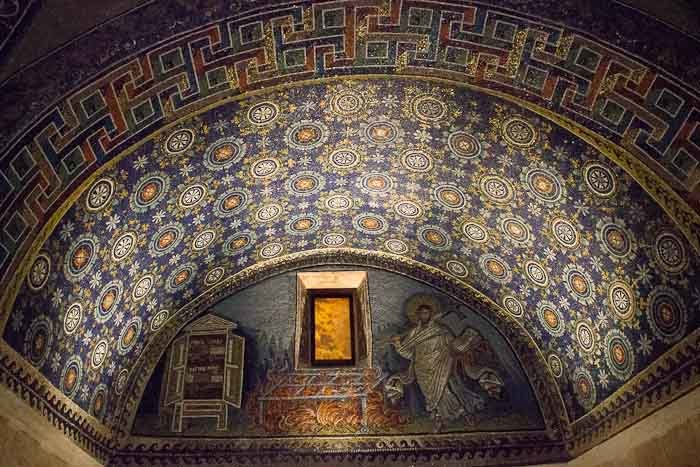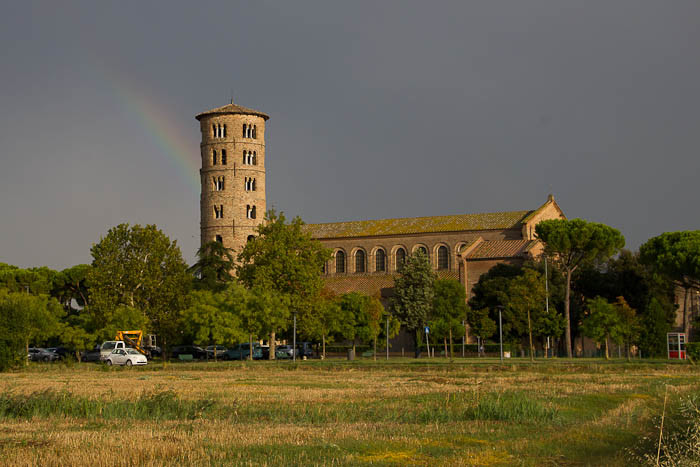The Unknown Artists of Ravenna
I’ve not always liked my name — one of my first acts on hitting puberty was to rebrand myself from “Theodora” to “Theo”, an innovation I’ve failed to reverse ever since — but I have always liked the story behind it.
Why? Because I’m named for a woman who grew up among the bears of the circus, and possibly rose from being a child prostitute and stripper — her exotic act involved geese pecking corn from her, umm, person — all the way through to Empress of the Eastern Roman Empire.
And, once there, she worked to protect her former peers — she banned brothels, tried to ban pimping, and set up homes where sexworkers could retire in peace. Here she is, in the Basilica di San Vitale, in Ravenna, complete with saintly halo and no-messing expression — go her!

Even with a tween grappling church fatigue, Ravenna is absolutely stunning (parenting tip from the department of the blindingly obvious: gelato and granita bribes go a long way in a place with as many religious monuments as Ravenna).
These mosaics were created around 1500 years ago, when this little town loomed large on the world stage, and no trace of the artists who made them has survived (unlike the artists behind the Valley of the Kings, they didn’t create tombs for themselves). But their art is extraordinary.
Look at Judas the Zealot, in the Baptistery in Ravenna. Brow furrowed, full lips pursed, eyes ultra-wide with the lies he is telling, his face has an expressiveness that’s incredibly rare in early art — but is also quite unreadable.
And they did this, these unknown artists, with little bits of coloured stone on a curving wall.

In the Mausoleum of Galla Placidia, an emperor’s sister, light floods through alabaster panels onto mosaics that seem as bright as the day they were made. They have been cleaned, over the years, but never recoloured, an attendant tells me.

On the ceiling of the Arian Baptistery, the apostles parade in a riot of bling as beautiful as Istanbul’s Aya Sofya.
As we trundle up to the Basilica of Classe, out in the country outside Ravenna, the rain stops, the thunder pauses, and a rainbow shimmers down to touch the very peak of the bell tower.
It feels, in its way, like a tribute to those unknown artists — and the narratives of piety and power that supported them.


Thank you for these awesome images. I thought you might be named after THE Theodora)))
Aaaaieeeee! Don’t mess with Theodora: lest she shoot fire out of her eyes, or club you with her chalice!
You really wouldn’t mess, would you, Henry? No wonder Procopius saved all the gossip up until she was safely dead…
Count your blessings over your namesake. Could have been Dora Bryan.
*googles*
LOL! Hahah what’s wrong with Theodora? I love it. Also the photos are great too.
Thank you!
Interesting post and some great images!
Added you on Twitter so I can read more of your travels – hope to see you there sometime!
Let’s hope so!
Great story with the murals and frescoes found in Ravenna … very fascinating!